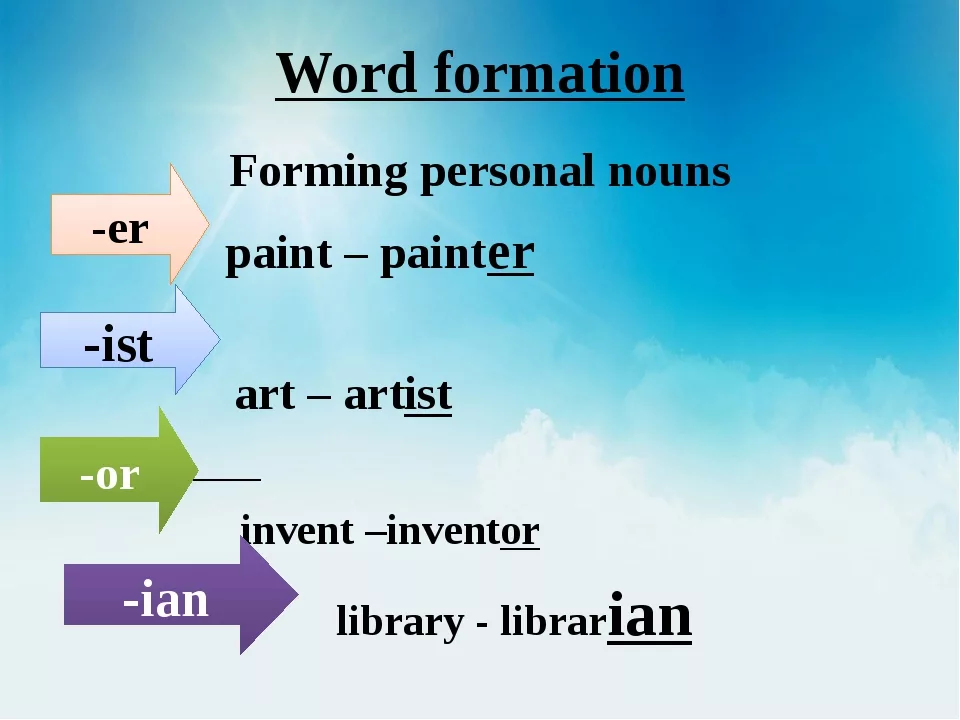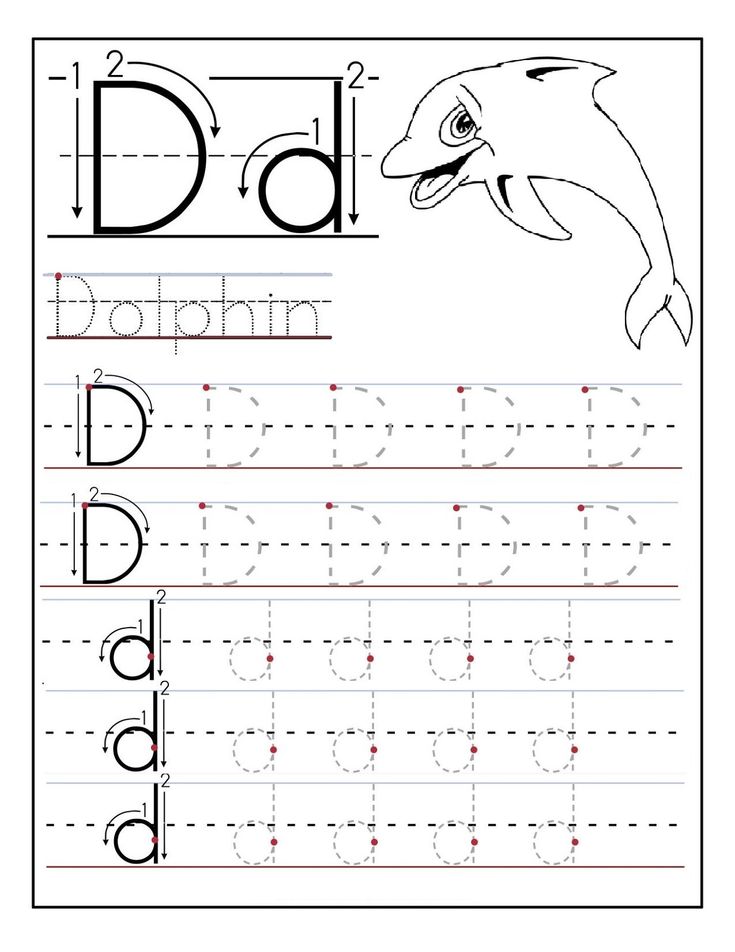2 step direction activities
30 Fun 2 Step Directions for Preschoolers
- Share
“Put your slippers on and grab a spoon for your cereal.” Easy to do, right?
For adults and older kids, following directions that have two steps can be quite an effortless task. For toddlers and young preschoolers, following multiple directions is a skill that takes time and maturity.
You can practise this skill in a fun way by using these 2 step directions for preschoolers.
What are Two Step Instructions?
Following directions that include two tasks is an important listening skill for children to learn. This helps them play games, follow instructions and procedures in the classroom and fit in socially with friends.
Being able to follow two-step instructions involves developing different types of skills.
Working memory is about holding onto information in order to use it. We want to be sure that kids can follow one-step directions effectively before moving ahead to giving them two steps to follow.
Auditory processing skills are also very important for enabling kids to follow directions they hear.
For example, auditory memory refers to when kids remember what they have heard, to use that information later.
Auditory closure helps them “fill in the blanks” when they have missed hearing the complete direction and auditory figure-ground aids kids in tuning out background noise to hear instructions. [source]
Speech therapy addresses not only how well children speak in words (expressive language) but also how well they understand what they hear (receptive language).
The receptive aspects of speech therapy are connected to auditory processing, and getting lots of practice in following directions is helpful to build those skills.
Verbal reasoning and vocabulary skills are also essential for children to comprehend your instructions. They must understand the words you are saying to be successful.
They must understand the words you are saying to be successful.
When Should a Child Follow 2 Step Directions?
At what age should a child start listening to and following one-to-two step directions?
At 24 months of age, many children can follow two or even three-step directions, especially those that are related, such as picking up two specific toys to put away on a shelf.
Although they can do this, research shows they choose to follow through only about half the time.
At around age three, most kids effectively follow two-step directions.
So then, when should a child follow 3 step directions?
Four-year-old children are usually able to follow through on three-step instructions, especially those that are given in a logical order.
[source]
How do I Teach My Child to Follow Multi-Step Directions?
It’s important to talk to your children often, giving voice to your own thought process as you move through your day. Verbalize what you observe about your child’s movements throughout the day, as well.
Verbalize what you observe about your child’s movements throughout the day, as well.
Read to your children, pointing to illustrations, and urging them to name objects.
How do you teach following instructions?
Listening skills in early childhood are very important and must be practised. Here are some tips:
- When giving your child instructions, state them clearly, in simple language, and give your child enough time to respond.
- Look at them when giving directions, and make sure they are looking at you.
- Restate or clarify if your child has not followed through on the instructions given.
- Model the correct actions, if necessary.
- Praise your child when they follow through on a single instruction and they will eventually build the ability to follow multiple part instructions.
- Don’t start giving 3 step directions until your child has mastered 2 instructions.
A list of 2 Step Directions for Preschoolers
Some of the following examples include 2 step directions with prepositions or spatial concepts, such as “on,” “under”, and “over.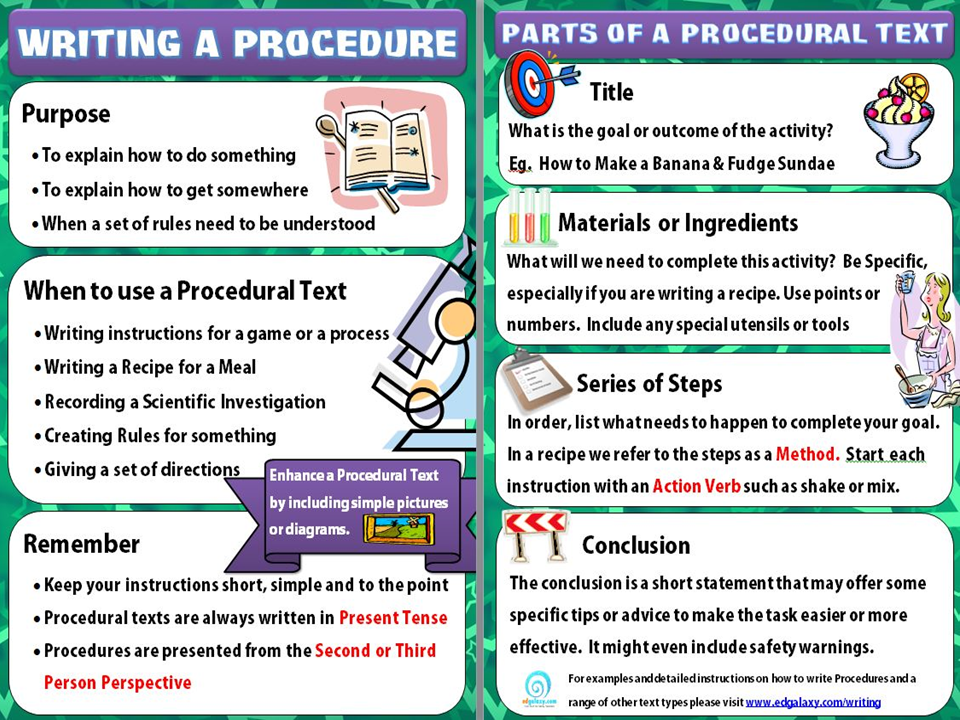 ”
”
These types of words address the relationships between objects or between objects and individuals and can help teach positional language.
Make a game out of requesting that your children complete two actions. You can also make it fun by using these directions in familiar games that require giving directions, such as “Simon Says” or “Follow the Leader.”
You could also play “Broken Telephone,” to see if the last person who hears the directions can follow through successfully.
Another fun game is Listen and Draw. Give multiple directions that your child must follow to draw the picture you describe.
[source]
Here is a list of instructions suitable for preschoolers:
1. Sit down on the floor and close your eyes.
2. Touch your head and turn in a circle.
3. Stand up and pretend to be frozen.
4. Bounce the ball and say your name.
5. Do a jumping jack and then sit on the chair.
6. Hop on one foot and smile.
7. Place the teddy bear under the table and sit on the chair.
8. Walk along the fence and sit on the swing.
9. Reach your hands over your head and clap your hands.
10. Stand next to Grandma/Grandpa and hold onto their hand.
11. Draw a yellow sun above the green grass.
12. Draw blue water next to a brown beach.
13. Touch your toes and then spin around in a circle.
14. Wash your face with this cloth and comb your hair.
15. Spread peanut butter on one slice of bread and place the other slice on top.
16. Pull your blanket up on the bed and arrange your stuffed animals.
17. Take a book out of your bag and set it on the table.
18. Lie down next to Mom/Dad and close your eyes.
19. Take off your mittens and hang them up to dry.
20. Point to your eyes and say your name.
21. Point to your lips and smack them together.
22. Turn off the TV and place the remote on the coffee table.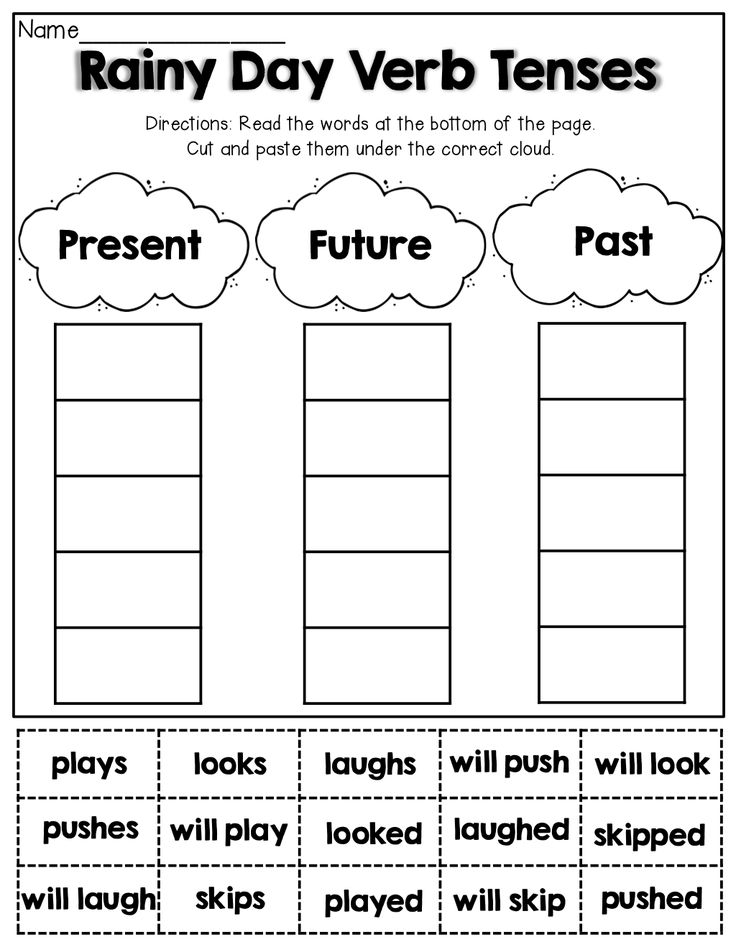
23. Stomp your feet and say, “I’m a dinosaur!”
24. Choose a book from your shelf and read it to your doll.
25. Cover your eyes and say, “Boo!”
26. Turn around in a circle and then sit down on the grass.
27. Wave goodbye to me and walk to the door.
28. Climb up the steps and then walk back down.
29. Fetch your school bag and put your lunch box inside it.
30. Wash your hands for dinner and come back to sit on a chair at the table.
These are just a jumping-off place to start your mind working! Involve your children and challenge them to make up their own directions and ask you to follow them!
Check out these other listening activities for kids to get even more practice!
Get FREE access to Printable Puzzles, Stories, Activity Packs and more!
Join Empowered Parents + and you’ll receive a downloadable set of printable puzzles, games and short stories, as well as the Learning Through Play Activity Pack which includes an entire year of activities for 3 to 6-year-olds.
Access is free forever.
Signing up for a free Grow account is fast and easy and will allow you to bookmark articles to read later, on this website as well as many websites worldwide that use Grow.
- Share
Teaching How To Follow 2- and 3-Step Sequential Directions
This is a guest blog post by Holly, a school-based SLP, all about teaching how to follow 2 and 3-step sequential directions!
Teaching Sequential Directions
Do you have students on your caseload that can follow one-step directions pretty well, but–as soon as the complexity increases–that accuracy goes out the window?
If that’s the case for you and your students, you’re not alone! There are plenty of factors that influence the ability to follow complex directions: hearing/vision, executive function skills, language comprehension, grammar, student level of interest, task complexity, and sequencing, just to name a few. These areas were reviewed in further depth in a previous post on following simple directions — a lot of that info applies here, too!
These areas were reviewed in further depth in a previous post on following simple directions — a lot of that info applies here, too!
Complex instructions are relevant for students across the grade-span. Like many domains of communication, the milestones related to following directions are geared towards younger children:
– Between 1-2 years of age, kids generally follow familiar one-step directions with support (Linguisystem, 2014)
– Between 2-3 years, children can follow two-step commands (Linguisystem, 2014)
– Around 4-5 years old, kids typically understand sequential terms (e.g., first, next, last) and respond to three-step directions at home or school (ASHA)
We know, of course, that the importance and complexity of instructions don’t end at age 5. Whether you work at an elementary, middle, or high school, following instructions serves as a major foundation for learning. These skills are also incredibly valuable for students working on vocational skills and transition plans. (Imagine your first day at a new job! There are countless tutorials to follow and procedures that you’re expected to get the hang of!) So how can we support our students no matter what level they’re working at?
(Imagine your first day at a new job! There are countless tutorials to follow and procedures that you’re expected to get the hang of!) So how can we support our students no matter what level they’re working at?
In a previous post on following simple directions, we outlined the process of assessing this skill, selecting meaningful targets, using visuals and strategies, plus designing structured and contextualized intervention.
Now we’re taking it a step further by teaching how to follow multi-step, sequential directions! We’ll review different types of complex directions, plus how to teach and strengthen this skill in therapy.
Types of Complex / Multi-Step Directions
Not all directions are equally complex — that’s why it’s important to figure out what strengths and challenges are impacting a student’s ability to follow along with instructions. Here are a couple examples:
Conditional Directions: If you ride the bus after school, line up here.
Spatial Concepts: Take a seat at the nearest table and face your chair towards the front of the room.
Temporal Concepts: Before you sit down, hang up your bag on the wall.
One Action, Multiple Objects: Grab a packet, glue stick, and a pair of scissors from the table.
Multiple Actions, One Object: With your pen, circle the word you don’t know, then underline any clues that will help you figure out what the word means.
Multiple Actions, Multiple Objects: Pick out a book, bring it to the checkout counter, and present your student ID card to the librarian.
The more concepts embedded into a set of instructions, the higher the demands placed on language and working memory will be.
For a deeper dive into assessing these skills, check out the prequel to this blog post and browse through the assessment materials available through the SLP Now membership! There’s a Smart Deck to quickly probe students’ accuracy in following 1, 2, and 3-step directions.
Teaching Multi-Step Directions in Therapy
How do you feel about using anchor charts, visuals, and compensatory strategies in therapy? From kindergarten through high school, I’ve found that these kinds of support make a huge difference for students.
VisualsWhen teaching a new skill, it can be helpful to use visual aids to represent a concept. This is because many of our students are already challenged by auditory or written comprehension (Law et al., 2017), so we can use this teaching phase as an opportunity to play to any strengths! This might involve using pictures, symbols, photos, or other visual supports when teaching a skill. Here are some of my favorite visuals to use with complex instructions:
StrategiesWhen helping students strengthen skills in an area, it takes time and practice. Strategies can be taught, practiced, and used the very same day — that kind of success can be really motivating for our students when they’re starting out! Over time, using rehearsal/visualization techniques has also been found to improve students’ abilities to follow directions (Gill et al. , 2003).
, 2003).
These handouts (included in the SLP Now membership) are great for partnering with teachers and working on self-advocacy skills for students.
Targeting 2 & 3-Step Sequential Directions (In Therapy & Beyond!)
Once you’ve selected your targets and reviewed the skills and strategies you’ll be working on with your students, now comes the fun part… Practice!
GamesIntroduce a new game or tweak a familiar one, emphasizing the importance of listening to the instructions
RecipesCan you think of a multi-step activity that is more functional than following a recipe? Our speech-language rooms don’t often come equipped with extra space, so your recipe could be as simple as making trail mix. However, if your school has an area dedicated to cooking skills or a kitchen space that you can borrow, try incorporating it into your therapy activities!
CalendarsTry filling out a planner, agenda, or calendar with students. The working memory demands are high here (e.g., note that your spring break is from April 4th-8th, and your book report is due the following Monday), so it emphasizes the importance of using external strategies, such as writing down details!
The working memory demands are high here (e.g., note that your spring break is from April 4th-8th, and your book report is due the following Monday), so it emphasizes the importance of using external strategies, such as writing down details!
When working with older students and developing transition plans, identify what kind of job skills involve complex directions (e.g., bagging groceries involves sorting items based on weight/shape/temperature, organizing them into a bag, and placing the bags into the cart). This is a great opportunity to incorporate your students’ interests!
Other Curriculum-Based ActivitiesTo support carryover throughout a student’s school day, collaborate with other teachers to see what activities involve complex directions. In a framework developed by Wallach (2014) and Kamhi (2014), we see that a contextualized approach to targeting these skills can be the most effective!
I hope this post has been helpful for you! Do you have any other questions or ideas for targeting multi-step directions? Feel free to comment below — thanks for stopping by!
References
American Speech-Language-Hearing Association.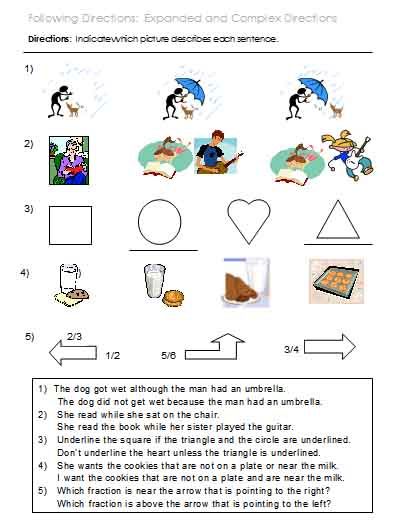 (n.d.) What should my child be able to do? Four to Five Years Old. Retrieved from https://www.asha.org/public/speech/development/45/.
(n.d.) What should my child be able to do? Four to Five Years Old. Retrieved from https://www.asha.org/public/speech/development/45/.
Gill, C. B., Klecan-Aker, J., Roberts, T., & Fredenburg, K. A. (2003). Following directions: Rehearsal and visualization strategies for children with specific language impairment. Child Language Teaching and Therapy, 19(1), 85-103.
Kamhi, A. G. (2014). Improving clinical practices for children with language and learning disorders. Language, Speech, and Hearing Services in Schools, 45(2), 92-103.
Law, J., Dennis, J. A., Charlton, J. J. V. (2017). Speech and language therapy interventions for children with primary speech and/or language disorders. Cochrane Database Systematic Review.
Wallach, G. P. (2014). Improving clinical practice: A school-age and school-based perspective. Language, Speech & Hearing Services in Schools, 45, 127–136.
What is outsourcing? Types and forms of outsourcing - definition, company services, advantages and disadvantages of the function Outsourcing in Russia Industrial IT outsourcing Knowledge management outsourcing Accounting Personnel outsourcing Legal Logistics
Detailed consultations (paid) on all these issues can be obtained via electronic communication channels (Skype, Zoom , phone, etc. ) or at the company's office in Kazan (by appointment) - leave a request and write us your question
) or at the company's office in Kazan (by appointment) - leave a request and write us your question
We can help you legally reduce taxes.
Through the application of legal tax benefits and preferences (according to the Tax Code of the Russian Federation and regional laws - subjects of the Russian Federation):
We can help you get preferential money:
Through participation in programs and competitive selections (under the PPRF and regional legal acts):
- subsidies
- grants
- target budget funds
- preferential loans of funds
- concessional bank loans
- land plots without auctions
- concessional rental rates for land and property
If necessary, please contact us!
How else can we be useful to you:
- one-time consultations on preparation for competitions,
- examination of documents developed (in-house) and completed application forms,
- finalization of documents and application forms,
- development of a project estimate, financial model, business plan, feasibility study (feasibility study), memorandum, presentation, project passport, preparation of a project documentation package,
- advice on grant taxation, budgetary, treasury procedures, methods of separate accounting, reporting, other financial, economic, marketing issues
- receiving targeted funding, tax incentives, grants and subsidies, other types of support, funding sources
- support of the applicant's project in competitions of regional and federal authorities,
- conducting market research (marketing), competitor assessment, recommendations for promotion, development,
- much more - contact us for services and advice.

Details self-reading :
- Methodology for separate accounting for expenses of the RFRIT subsidy
- Obligations of the grantee RFRIT
- Answers to frequently asked questions RFRIT PPRF 550
- 2021 Support measures for FI "Artificial Intelligence"
- 2021 Development priorities for the implementation of domestic software
- Include the product in the register of electronic equipment
- Enter the software product into the register of Russian software
- Log in to the register of electronics developers
- Anti-crisis plan
- How to prepare your project, business structure - to attract government support (targeted budget funds, subsidies, tax breaks, grants, preferences, etc.) or to attract debt financing, enter the IPO
New current programs:
- Tax benefits from 2021
- Reimbursement for audiovisual producers
- 14% premiums for producers of animated audiovisual products
- Subsidies for the promotion of audiovisual productions
- Grant of 20-300 million rubles to developers of Russian software , information security tools, office software, software in the field of information security, innovative software, distributed registry technologies, information processing and storage
- Tax incentives for developers of domestic software for computers, hardware and software kits (APK \ PAK), radio electronics
- 2021 Support measures for the FI "Artificial Intelligence"
- 2021 Development priorities for the implementation of domestic software
- Priorities in 2021 for the development of the implementation of domestic software
- PPRF subsidies 456
- AI start-ups and IT companies
- FPRF grants to 767 AI pilot projects
- RFRIT: changes in support measures for PPRF programs 550
- RFRIT subsidies 550 PPRF from July 2021
How else can we help?
We share our experience and expertise with you:
- We answer the question: "Where can I get money for the project?"
- Explaining concepts and terms, conveying the essence
- We check the competence and level of understanding of the team,
- Checking the readiness of the team to start and complete the project ,
- We train the team in the missing knowledge and skills,
- The team adopts knowledge - learns - in the work on the project,
- We explain in simple language - "chew" - complex and voluminous information,
- Getting rid of the need:
- reading 100 pages of miscellaneous documentation,
- readings of 100 pages of laws, legal acts,
- viewing 100 hours of seminars, presentations
- spending 100 hours searching for experts, information holders, competency holders
- spending 100 hours of appointments and meetings,
- spending 100 hours on questions/answers,
- spending 100 hours talking: useful and "not so",
- purchases of specialized software,
- other expenses for your own staff
- We give the "dry residue" - the result, the quintessence of utility,
- We answer questions:
- What are the programs, preferential finance?
- What do they give money for?
- Who is given and who is not?
- How to participate in them?
- What are the requirements?
- What are the "pitfalls"?
- What affects the increase in the probability of "winning"?
- How to increase the chances of winning an application?
- How much can you realistically receive?
- What documentation is needed?
- How to make it?
- How can we help?
- What is the best way to "package" a project?
- Many other benefits of outsourcing experts
If necessary, please contact us!
More on the topic Sources of financial resources for IT business, project:
- 90% share of income from core business?
- Who is recognized as a tax resident for personal income tax
- Benefits for IT companies in 2021: to whom and how?
- Methodology for calculating the AMS
- Income tax 3% to the budget of the Russian Federation, 0% to the budget of the subject of the Russian Federation
- Operations with computer software and database from register are not subject to VAT
- Zero 0 VAT rate from 2021 on the sale of rights to software
- On benefits for IT companies from 2021 Ministry of Finance
- About tax incentives for the IT industry from 2021
- Calculation of 2021 insurance premiums for IT (7.
 6%*)
6%*) - From 2021 reduced rates of insurance premiums for IT companies
- Insurance premium rates reduced to 7.6%
- Income tax rate 3 percent IT companies
- The cost of the computer through depreciation - NOT a lump sum
- Insurance premiums 7.6% from 2021 for IT, RAVP, IT, SEZ, SEZ, PSEZ
- Insurance premiums 7.6% from 2021 for IT organizations
- Conditions for reduced rates of contributions from payroll: FSC 7 share 90% accreditation
- Formula for calculating the AMS
- Formula for calculating the AMS
- Accreditation of IT companies
- Facilitating the entry of foreigners for IT companies
- 1% and 5% USNO rates for residents of SEZ Innopolis 62, 63 OKVED code
- 1. What is outsourcing
- 1.1. The essence of outsourcing
- 1.2. Functions
- 1.3. Outsourcing in Russia
- 2. Types of outsourcing
- 2.1. Production
- 2.
 2. IT outsourcing
2. IT outsourcing - 2.3. Knowledge Management Outsourcing
- 2.4. Accounting
- 2.5. Personnel outsourcing
- 2.6. Legal
- 2.7. Logistics
- 3. Outsourcing company
- 3.1. What does do
- 3.2. Outsourcing agreement
- 3.3. How to open an outsourcing company
- 4. Examples of outsourcing
- 5. Video
Recently, highly specialized specialists have become much more valuable, so many companies attract employees from external sources. The service of providing personnel outsourcing is very popular today - what it is and how outsourcers work is not yet known to everyone. This service comes to the rescue when you need to save the company's budget and effectively organize its work.
What is outsourcing
Translated from English, the term outsourcing means an external source. Outsourcing services involve the transfer of certain functions to specialists from another company. As a rule, this applies to non-core industries. Under the contract, external contractors provide catering, transport services, advertising, cleaning, marketing, security, etc. The outsourcing company is engaged in outstaffing of personnel - the transfer of personnel to other firms and enterprises. Recently, this industry has been actively developing due to the demand for the services of contractors.
As a rule, this applies to non-core industries. Under the contract, external contractors provide catering, transport services, advertising, cleaning, marketing, security, etc. The outsourcing company is engaged in outstaffing of personnel - the transfer of personnel to other firms and enterprises. Recently, this industry has been actively developing due to the demand for the services of contractors.
The essence of outsourcing
Outsourcing work is based on the main principle - to keep for yourself what you can do better than others. External employees are transferred to what they can do better than the staff of the customer's company. The main goal of the transfer of functions to subcontractors is the release of resources and the concentration of all the efforts of the enterprise on competitive advantages.
Outsourcing services help the customer to reduce the company's costs for paying taxes, sick leave, vacations, contributions to pension funds and other things. In addition to reducing additional costs, the customer saves time on organizing the work of employees and forming a staff. The main advantage of outsourcing is that it helps the customer to concentrate on their own main production, without wasting time and money on additional activities. Subcontractors have more experience than regular employees performing non-core functions.
In addition to reducing additional costs, the customer saves time on organizing the work of employees and forming a staff. The main advantage of outsourcing is that it helps the customer to concentrate on their own main production, without wasting time and money on additional activities. Subcontractors have more experience than regular employees performing non-core functions.
The procedure for attracting an outsourcer provides for the conclusion of an appropriate contract. Each party is legally responsible for fulfilling its obligations. Depending on the type of outsourcing chosen, certain functions of the company related to information technology, personnel, accounting and others are transferred to subcontractors. The customer under the staff lease agreement must pay for the services in a timely manner. The responsibility of the outsourcer is to provide qualified employees.
Functions
The answer to the question, what is outsourcing, can be obtained by studying the functions that it provides. Any duties can be assigned to third-party performers, but the service does not apply to the selection of management personnel. Enterprises turn to outsourcing companies to transfer the following responsibilities:
Any duties can be assigned to third-party performers, but the service does not apply to the selection of management personnel. Enterprises turn to outsourcing companies to transfer the following responsibilities:
- accounting;
- conducting personnel records management;
- payroll calculations for employees;
- implementation of taxation operations;
- equipment maintenance;
- ensuring the functioning of the office;
- software;
- maintenance;
- performance of written, oral, simultaneous translations;
- information support;
- creation and control of advertising campaigns;
- security;
- regulation of legal issues of the enterprise;
- development and implementation of projects;
- logistics and delivery management;
- cleaning;
- performance of production functions.
Outsourcing in Russia
The history of outsourcing in Russia begins in the 90s. Security firms, marketing agencies and public relations companies are the first to appear on the territory of the country. An aggravating factor in the development of outsourcing of any business in the territory of the Russian Federation was the low social security of employees. The main impetus for the development of the industry in the country was the desire to save on financial costs without sacrificing production efficiency.
Security firms, marketing agencies and public relations companies are the first to appear on the territory of the country. An aggravating factor in the development of outsourcing of any business in the territory of the Russian Federation was the low social security of employees. The main impetus for the development of the industry in the country was the desire to save on financial costs without sacrificing production efficiency.
Currently, outsourcing of business process optimization is popular in the Russian Federation, but there are many stereotypes associated with this concept. It is important to understand that outsourcing is not only hiring personnel, but also organizing full-fledged cooperation in a particular area. By attracting third-party workers, it is easier for customer enterprises to conquer the market and increase production capacity.
Many large companies in the country have already appreciated the benefits of outsourcing. Especially popular are the services of advertising agencies, the development and promotion of websites, accounting services, recruitment. The advantage of long-term contracts with outsourcing companies is the ability to annually increase cost savings and the amount of financial resources for core development.
Especially popular are the services of advertising agencies, the development and promotion of websites, accounting services, recruitment. The advantage of long-term contracts with outsourcing companies is the ability to annually increase cost savings and the amount of financial resources for core development.
Types of outsourcing
In order to conduct business effectively, a company may outsource non-core functions to a contractor. In practice, enterprises use various services, of which there are a huge number today. You need to choose an outsourcing company taking into account the requirements of your company. Below are the main types of outsourcing that are developing in Russia and other countries.
Manufacturing
High-tech industrial enterprises often outsource the processing, assembly, and testing of products to contractors. The whole process is given to third parties by telecommunication companies. Production outsourcing helps to reduce the cost of manufacturing goods, increase the level of reliability and quality. The transfer of part of the responsibilities allows you to focus on the development of new products, sales and promotion of existing ones.
IT outsourcing
This industry is one of the most demanded and includes a wide range of functions that are related to the maintenance of computers, hardware, software. IT outsourcing - what are these services? They can be attributed to equipment maintenance, software development. The popularity of information technology around the world makes this type of industry one of the most sought after.
Knowledge Management Outsourcing
This type is just beginning to develop in the US, so some countries are not familiar with it. The service involves the management of company processes that need deep study and serious analytical processing. Firms-outsourcers undertake the formation of the knowledge base and management. Information in the future can be used to make important management decisions.
Firms-outsourcers undertake the formation of the knowledge base and management. Information in the future can be used to make important management decisions.
Accounting
This industry helps to reduce the company's costs of organizing its own accounting. Functions within the industry are transferred to various contractors. Outsourcing accounting - what kind of service is it? One of the most popular forms of the industry is the outsourcing of accounting and reporting duties. It is important to take into account that the management of the customer's enterprise is responsible for the result (responsibility is not transferred under a subcontract along with duties).
There are several options for cooperation:
- accounting;
- reporting;
- tax accounting;
- full service (daily accounting, reporting for time periods, creation and maintenance of primary documentation).

Personnel outsourcing
This type of service is in demand at large enterprises where the possibility of staff turnover is not ruled out. Outsourcing of personnel - what does it mean? Such services are provided by recruitment agencies, which helps the enterprise to significantly reduce the cost and time spent on staff management. Specialists of outsourcing companies can take on the hiring of employees, the calculation of the tax burden in relation to salaries, bonuses, and compensation. It is important to note that the recruitment agency is not responsible for the quality of the work of the hired personnel.
Legal
Medium and small companies actively use the services of legal outsourcing firms. Contractors provide services on labor and tax law. In addition, it is possible to attract outsourcers for the correct reorganization, registration or liquidation of a legal entity. As a rule, full-time lawyers are much more expensive than the services of contractors, due to the low workload of a specialist.
As a rule, full-time lawyers are much more expensive than the services of contractors, due to the low workload of a specialist.
Logistics
Transport outsourcing means the transfer of transportation or delivery functions to third parties. This is convenient for enterprises that need to periodically send goods over certain distances, but there is no need for their own transport department. Recently, the logistics outsourcing market has been actively developing. Contractors may perform warehousing and transportation duties.
Outsourcing company
For some business representatives, it remains unclear what an outsourcing company is. An outsourcer is a highly specialized company or a company with a wide range of services that provides personnel to other enterprises on the basis of a temporary cooperation agreement. The tasks of such contractors are to create an asset of the company, which includes qualified employees of various specialties, full-time and reserve.
What does
Depending on the profile of an outsourcer, he can offer potential clients the following types of services:
- bookkeeping;
- legal advice;
- advertising;
- insurance activities;
- preparation of tax reports;
- cleaning;
- office printing;
- website promotion.
Outsourcing agreement
All relations between the customer and the outsourcer are governed by the relevant agreement. The subject of the transaction is the provision of personnel meeting certain qualification requirements. The essential terms of the outsourcing agreement are presented below:
- subject of agreement;
- the number of involved employees, their qualifications;
- scope of work to be performed;
- cost of contractor's services;
- procedure for payment for services;
- rights and obligations of the parties;
- term of the agreement;
- order of acceptance of services.

It is important to take into account that the legislation of the Russian Federation does not regulate the provision of outsourcing services in any way, which is a minus of working with third parties, in connection with which the contract becomes the only source of control over the fulfillment of the terms of the transaction is the agreement. It is important to reflect in it the options for resolving all possible issues, controversial issues. It is necessary to describe in detail the list of services provided. The contract is signed by the parties having the right to do so. In some cases, it is worth checking whether the outsourcing company has a license to provide services.
How to open an outsourcing company
Before opening an outsourcing company, you should consider all the risks and find your niche in the market. Owners can register as legal entities or entrepreneurs. It is important to immediately indicate the main activities of the company. You can choose any sphere, the main thing is that it is in demand in your region. An outsourcing company definitely needs start-up capital for renting premises, organizing staff work, and so on.
You can choose any sphere, the main thing is that it is in demand in your region. An outsourcing company definitely needs start-up capital for renting premises, organizing staff work, and so on.
Organizing such a business, special attention should be paid to the personnel: the agency's efficiency, reputation, and productivity directly depend on the level of training of employees. Employees are required to have appropriate qualifications and experience. Having chosen a certain direction of the company's activity, it is important for management to navigate the basic requirements for personnel or use the services of a qualified personnel officer.
Examples of Outsourcing
Outsourcing relationships are common in practice. For example, many manufacturers and retailers partner with call centers to avoid hosting them on their premises. Recruitment agencies are also in high demand, especially in large cities. Specific examples of the use of the service are presented below:
Recruitment agencies are also in high demand, especially in large cities. Specific examples of the use of the service are presented below:
- Ford produces only 1/3 of its products in-house, the rest is given to subcontractors.
- Another giant that has managed to appreciate all the advantages and disadvantages of outsourcing, and actively uses this scheme of work - IKEA. It practically does not have its own production, cooperating with thousands of suppliers. Transport functions in IKEA are delegated to a third-party organization, so the company directs all its resources to the retail sale of products.
- Back in the 90s, Kodak transferred all IT areas to IBM, which aimed at leadership in this segment and received such an opportunity.
Directions – Medical Volunteers
Step 1
Choose your county: -CentralNorthwesternSouthernNorth CaucasianVolgaUralSiberianFar Eastern
Choose a region: -
City *:
Step 2
Leave your details or contact the regional coordinator
Surname *: Name *: Middle name *: Mobile phone: Email mail *: Link to VK profile *:
Date of birth *: Status: University studentCollege studentSchool/gymnasium/lyceum studentDoctor-residentMedical officerOther Place of study/work *: Desired line of business: Assistance to medical staff
Sanitary education
Career guidance for schoolchildren in medicine
Assistance in medical support of mass and sporting events
Promotion of personnel donation
Healthy lifestyle
Other Consent to the processing of personal data
An electronic volunteer book has been created for you to record volunteer activities.
To complete its registration, follow the link below to the site:
Go to registrationvolunteers of Russia.rf
An electronic volunteer book has been created for you to record volunteer activities.
To complete its registration, follow the link below to the site:
Go to registrationmonitoring.kmiac.ru
The certificate will be sent to your specified mail within a week.
The certificate will be sent to your specified mail within a week.
The certificate will be sent to your specified mail within a week.
The certificate will be sent to your specified mail within a week.
The certificate will be sent to your specified mail within a week.
Fill out this short form communication about holding on the basis of your organization All-Russian lesson on first aid. Within 2x working days after filling it out to the e-mail you specified address will receive a certificate of participation in the action. Therefore very it is important to fill in the fields carefully, indicating the full names - they will be included in the certificate. filling forms will be available from February 28 to March 5. You can send any questions you may have to e-mail: [email protected]
Therefore very it is important to fill in the fields carefully, indicating the full names - they will be included in the certificate. filling forms will be available from February 28 to March 5. You can send any questions you may have to e-mail: [email protected]
Email We will send you a certificate to the specified address
Full name of your organization For example, GBOU School No. 28 or the Palace of Children's Art "Solnyshko"
Select Federal District -CentralNorth-WesternSouthNorth-CaucasianVolgaUralSiberianFar Eastern
Select the region where your organization is located -
Enter the name of the locality where your organization is located
Select the formats of events that were held on the basis of your organization on February 28, 20 as part of the All-Russian lesson
Interactive lesson according to the proposed scenarioPractical master class
Other
Specify the age of the event participants
Indicate the total number of schoolchildren who took part in the activities of the Promotion in your organization
Evaluate the quality of materials (concept, script, leaflet layout, etc. ) provided by the Promotion organizers If you rated the materials below 3 points, please leave a comment in the feedback field indicating how, in your opinion, the organizers should improve the materials provided when preparing the next action. Very poor quality materials
) provided by the Promotion organizers If you rated the materials below 3 points, please leave a comment in the feedback field indicating how, in your opinion, the organizers should improve the materials provided when preparing the next action. Very poor quality materials
Comments and feedback
If you were a member of the All-Russian Forum of Medical Volunteers in 2022, then fill out this form and within a week after filling it out, a certificate will be sent to the e-mail address you specified. It is IMPORTANT to fill in the fields carefully, indicating the full names - they will be included in the certificate.
Email We will send you a certificate to the specified address
Full name Ivanov Ivan Ivanovich
Select Federal District -CentralNorth-WesternSouthernNorth-CaucasianVolgaUralSiberianFar EasternLugansk People's RepublicDonetsk People's Republic
Select the region where your organization is located -
Fill out this short feedback form about holding a lesson on the basis of your organization as part of the All-Russian Health Lesson "Be healthy!". Within a week after filling it out, a Certificate of participation in the promotion will be sent to the e-mail address you specified. Therefore, it is very important to fill in the fields carefully, indicating the full names - they will be included in the certificate.
Within a week after filling it out, a Certificate of participation in the promotion will be sent to the e-mail address you specified. Therefore, it is very important to fill in the fields carefully, indicating the full names - they will be included in the certificate.
Email We will send you a certificate to the specified address
Short name of your organization For example, GBOU School No. 28 or the Palace of Children's Art "Solnyshko"
Select Federal District -CentralNorth-WesternSouthNorth-CaucasianVolgaUralSiberianFar Eastern
Select the region where your organization is located -
Enter the name of the locality where your organization is located
Indicate the number of lessons given according to the proposed scenario in your organization
Specify the age of the event participants
Indicate the total number of schoolchildren who took part in the activities of the Promotion in your organization
Evaluate the quality of materials (concept, script, leaflet layout, etc. ) provided by the Promotion organizers If you rated the materials below 3 points, please leave a comment in the feedback field indicating how, in your opinion, the organizers should improve the materials provided when preparing the next action. Very poor quality materials
) provided by the Promotion organizers If you rated the materials below 3 points, please leave a comment in the feedback field indicating how, in your opinion, the organizers should improve the materials provided when preparing the next action. Very poor quality materials
Comments and feedback
Thank you for participating in the game! Fill out this form and within a week after filling it out, a Certificate of participation in the game will be sent to your e-mail address. It is IMPORTANT to fill in the fields carefully, indicating the full names - they will be included in the certificate.
Email We will send you a certificate to the specified address
Full name For example, Ivanov Ivan Ivanovich
Short name of your organization For example, GBOU School No. 28 or the Palace of Children's Art "Solnyshko"
Select Federal District -CentralNorth-WesternSouthNorth-CaucasianVolgaUralSiberianFar Eastern
Select the region where your organization is located -
Fill out this reporting form about participation in the New Level Interregional Online Forum on Medical Volunteering.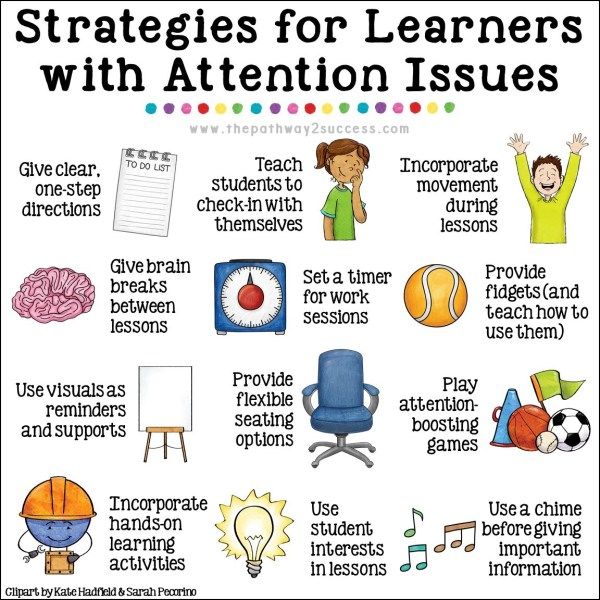 Within a week after filling it out, a Forum Participant Certificate will be sent to the e-mail address you specified. It is IMPORTANT to fill in the fields carefully, indicating the full names - they will be included in the certificate.
Within a week after filling it out, a Forum Participant Certificate will be sent to the e-mail address you specified. It is IMPORTANT to fill in the fields carefully, indicating the full names - they will be included in the certificate.
Email We will send you a certificate to the specified address
Full name For example, Ivanov Ivan Ivanovich
Job title -Regional coordinatorDeputy regional coordinator Coordinator of programs for schoolchildrenCoordinator for the promotion of human donation Coordinator of the direction "Volunteer assistance in medical organizations" Coordinator for training in first aid and support of events Coordinator of the direction "Healthy lifestyle" Coordinator of the direction "Sanitary and preventive education" Coordinator of special projects Volunteer
Select Federal District -CentralNorth-WesternSouthNorth-CaucasianVolgaUralSiberianFar Eastern
Select the region where your organization is located -
Comments and Feedback We ask you to evaluate the provided information and methodological materials, indicating how, in your opinion, the organizers should improve them when preparing the next forum.
Fill out this reporting form about participation in the All-Russian Action for Psychological Education dedicated to the World Mental Health Day. Within a week after filling it out, a certificate for participation will be sent to the e-mail address you specified. It is IMPORTANT to fill in the fields carefully, indicating the full names - they will be included in the certificate.
Email We will send you a certificate to the specified address
Full name For example, Ivanov Ivan Ivanovich
Job title - Regional coordinator of the direction "Psychological assistance to the population" Volunteer psychologist
Select Federal District -CentralNorth-WesternSouthNorth-CaucasianVolgaUralSiberianFar Eastern
Select the region where your organization is located -
Comments and Feedback We ask you to evaluate the provided information and methodological materials, indicating how, in your opinion, the organizers should improve them when preparing the next action.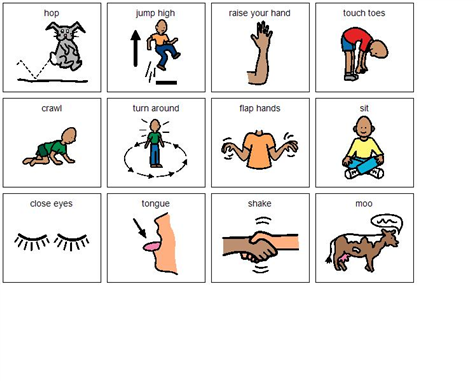
Fill out this short feedback form about the events under the Healthy Change federal program. At the end, it will come to the e-mail address you specified. Therefore, it is very important to fill in the fields carefully, indicating the correct names - they will be entered in the certificate.
Email We will send you a certificate to the specified address
Short name of your organization For example, GBOU School No. 28 or the Palace of Children's Art "Solnyshko"
Select Federal District -CentralNorth-WesternSouthNorth-CaucasianVolgaUralSiberianFar Eastern
Select the region where your organization is located -
Enter the name of the locality where your organization is located
Specify the number of lessons for the program
Specify the age of the event participants
Indicate the total number of students who participated in the program
Evaluate the quality of materials (concept, script, leaflet layout, etc.






